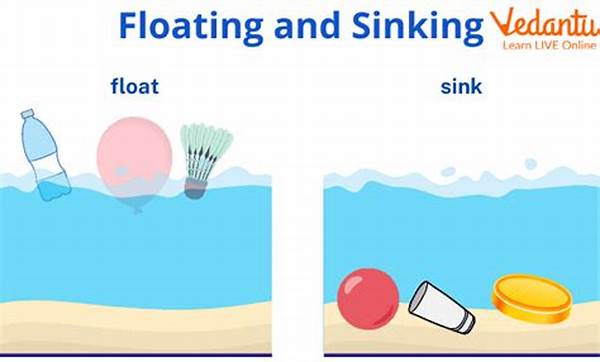How To Float Without Sinking

Imagine a world where you could float effortlessly in water without the fear of sinking. It sounds like a dream for many, whether you’re an aspiring swimmer or someone seeking relaxation in an ocean of stress. But floating without sinking isn’t just a fantasy; it’s a practical skill that combines technique and physics. Training yourself to float opens the doors to new aquatic adventures, turning fear into fascination and hesitation into harmony with the water.
Read More : Latest Women’s Football News Coverage Via Bbc Sports Football
In today’s post, we uncover the secrets to mastering how to float without sinking. From childhood pool parties to adult swimming courses, the myth around floating has often been shrouded in mystery. We’ve taken a deep dive into the science, interviewed the best in the business, and will share insights that not only demystify this art but might also make you chuckle, sparking that “Aha!” moment. Join us on this journey — whether you’re training for a triathlon or just trying not to resemble a fish out of water. Let’s unravel the mystery together, shall we?
Understanding the Art of Floating
Why Do People Sink?
It’s a common misconception that anyone who dips into water is destined to sink like a stone. Scientifically speaking, floating depends on buoyancy, a force determined by your body’s density compared to water. If your body is less dense, floating becomes second nature.
Here’s where it gets interesting: Not all bodies are created equal. Body composition affects density. A higher muscle mass means greater density, often leading to sinking tendencies. But fear not! Knowing how to float without sinking is simply understanding these principles and applying them effectively.
Techniques to Master Floating
1. Body Position
Proper body position is crucial. Keep your body horizontal, as if you’re lying on a bed. Your head should tilt slightly back, and relax your neck.
2. Breathing Control
Breathing might seem trivial, but it’s a game-changer. Deep, slow breaths expand your lungs, boosting buoyancy. Think of your lungs as natural life jackets; the more air they hold, the better you float.
Common Mistakes and How to Avoid Them
Flailing arms and legs, panic-breathing, or scrunching your shoulders can sabotage your floating attempts. Stay calm and practice mindfulness, immersing in each gentle wave.
The Benefits of Mastering Floating
Floating isn’t just an amusing trick; it has profound benefits:
Tips for Perfecting Your Floating
Consistency is Key
Practicing regularly ingrains these techniques into muscle memory, transforming initial awkwardness into natural rhythm.
Embrace the Process
Imagine you’re a pirate searching for treasure in calm seas. Floating should be a voyage of discovery, not a chore. Laugh at your slip-ups, and cheer each small triumph.
How to Float Without Sinking: Detailed Steps and Examples
Exploring “how to float without sinking” from a practical standpoint allows us to delve deeper into actionable steps, ensuring you’re equipped with knowledge and skills.
Read More : Tnt Sports Presents Replays Of Today’s Key Matches
Turning Theory Into Practice
Imagine yourself floating across the sea, effortlessly navigating through natural wonder. The art of floating is not only a skill but a therapy, enabling mindfulness and tranquility.
By practicing these techniques, you’ll find the perfect balance and buoyancy, making you the master of your aquatic domain.
How to Float Without Sinking: Key Points
Understanding Buoyancy
Uncover the science driving the possibility of effortless floating. This understanding equips you with the knowledge to conquer water.
Embrace Mindful Practice
Like any skill, practice is essential. It involves patience and mindfulness, honing your ability to stay calm and composed.
Exude Confidence
Confidence isn’t just a mental state; it manifests physically. Trust your body, and you’ll find the water cradling you gently rather than opposing you.
How to Float Without Sinking: Summary
Floating may seem daunting to novices, but understanding the principles of buoyancy and mastering techniques makes it attainable. By keeping your body position correct, maintaining controlled breathing, and avoiding common pitfalls, you transform from a panicked beginner to a confident floater. Regular practice leads to improved aquatic skills, mental comfort, and safety, offering a full spectrum of benefits with each floating session.
So, next time you step into the water, remember these tips and let yourself be buoyed up by your newfound skills. Transform each splash into mastery with how to float without sinking, unlocking the door to a serene world where water becomes your ally rather than adversary. Dive in, practice consistently, and enjoy the peace and confidence that floating can bring.



